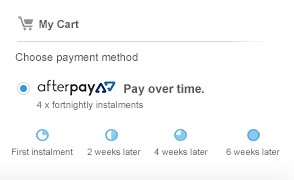How to identify a failing crank position sensor
Author: ETP Engine Parts Date Posted:1 April 2020
The CrankShaft Position Sensor
The crankshaft's key function in an engine is to hold everything together and to reciprocate the moving parts. It then moves the straight up and down movement of the pistons into a rotating movement to be sent to the gearbox.
The CrankShaft Position Sensor is a device that's located near, or generally on the front of the crankshaft. Typically on the front side of the engine, though that can change from one engine to another. This part helps your engine run smoothly as it tells the car's computer where the crankshaft is and how fast the engine is spinning.
The engines computer, the ECU, then uses the data to control the timing of the ignition and the fuel injection. It keeps all parts of the engine running smoothly and in check.
When the crankshaft position sensor becomes faulty, an engine will begin to run very poorly, often to the point of not running at all.
There are typically 2 main causes for a faulty crankshaft senor. It either over heats or the circuit fails. In either case, it can cause costly damage that may be lasting, or at a minimum cause your vehicle to stop working. Generally you'll be able to spot some indications before it fails completely.
5 Common Problems
1) Difficulty Starting the Vehicle
The crankshaft position sensor is responssible for checking the position and speed of the engine and the crankshaft. As part of this, it plays a vital role in starting the engine. A failure in the sensor may cause the engine to have difficulty starting or just to not start at all.
2) Check Engine Light Indicator Is On
The easiest way to work out that there's a problem with a sensor, mainly the crankshaft position sensor, the Check Engine Light will come on. The Check Engine Light shows you that there's a problem with a sensor, one of the most common ones being the crankshaft position sensor.
If you see the check engine light come on, it's always important to go to your trusted mechanic to get the engine checked, as it could be one of a number of issues. A trained mechanic can use a computer to show what the problem is and repair it for you.
3) Uneven Acceleration
If there is imprecise information being sent to the ECU from the crankshaft position sensor, the computer can't make the right decisions about how to control the timing of fuel and ignition. The flow on effect of that is that the acceleration won't be smooth. As the sensor is sending the wrong information to the computer, the signals to injectors and spark plugs will be incorrect.
Similarly, if you find it hard to keep the engine at a steady speed, you may also have a crankshaft position sensor issue.
4) Engine Vibrating
If you feel your engine rumbling or rattling unevenly, the crankshaft position sensor may be faulty. Generally you'll see the engine physically shaking and will make a splutting sound. The chances are, there's a sensor problem.
5) Decrease in Economy
When incorrect timing is being sent to the engine from the ECU, the amount of fuel used by the injectors will be incorrect. This is often a cause of the crankshaft position sensor being faulty. This results from the ECU thinking the crankshaft is doing something that it's not, thus the injectors end up using more fuel than they should.
The crankshaft position sensor is vital to your engine functioning properly Issues with the crankshaft sensor can rapidly prompt issues that influence the drivability of the vehicle. Therefore, in the off chance that you presume your crankshaft position sensor has an issue, have the vehicle checked by an expert as soon as possible. They will have the option to analyse your vehicle and replace the crankshaft position sensor, if essential.






